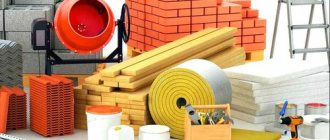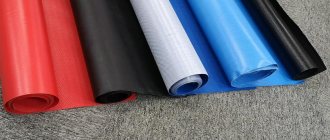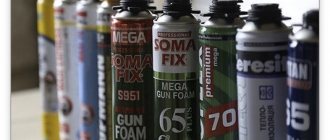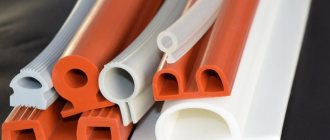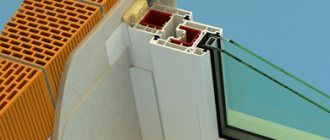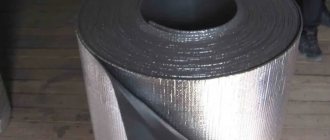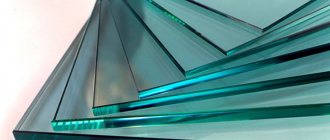Foam plastic - what is it?
Foam plastic is a whole class of materials used in many industries: mechanical engineering, construction, healthcare, gardening and even beekeeping.
Polystyrene foam as a container for the food industry
The foam is based on ultra-light plastic gas-filled plastics obtained from various synthetic polymers. The name of a specific type of foam is determined depending on what polymer or resin the material is made from.
One of the classifications of foam plastics is based on the type of polymer or resin used:
- alkene - from polyethylene and polypropylene;
- urea - from urea-formaldehyde resins (Penoizol);
- polyvinyl chloride - from polyvinyl chloride resins;
- polystyrene - made from expanding polystyrene with or without the addition of a fire retardant (expanded polystyrene, extruded polystyrene foam);
- polyurethane - made of polyesters and polyisocyanates with the addition of a fire retardant (polyurethane foam insulation);
- phenolic - from resol or novolac phenol-formaldehyde resins and phenolic alcohols.
Thus, polystyrene foam is a general term for foamed plastics, and polystyrene foam is one of the types of polystyrene foam, just like polyurethane foam and Penoizol.
All types of foam plastic have a low thermal conductivity coefficient and, as a result, have excellent thermal insulation qualities, which is why they are used for wall insulation.
Almost all foam plastics release very toxic substances during combustion. This imposes certain restrictions on their use in the construction of residential buildings.
Comparison of insulation materials by thermal conductivity
Expanded polystyrene (foam)
How to make clay with your own hands
Expanded polystyrene (foam) slabs
This is the most popular thermal insulation material in Russia, due to its low thermal conductivity, low cost and ease of installation. Polystyrene foam is produced in slabs with a thickness of 20 to 150 mm by foaming polystyrene and consists of 99% air. The material has different densities, has low thermal conductivity and is resistant to humidity.
Due to its low cost, expanded polystyrene is in great demand among companies and private developers for insulating various premises. But the material is quite fragile and ignites quickly, releasing toxic substances when burned. Because of this, it is preferable to use polystyrene foam in non-residential premises and for thermal insulation of non-loaded structures - insulation of facades under plaster, basement walls, etc.
Extruded polystyrene foam
Penoplex (extruded polystyrene foam)
Extrusion (technoplex, penoplex, etc.) is not exposed to moisture and rotting. This is a very durable and easy-to-use material that can be easily cut with a knife to the desired size. Low water absorption ensures minimal changes in properties at high humidity; the slabs have high density and compression resistance. Extruded polystyrene foam is fireproof, durable and easy to use.
All these characteristics, along with low thermal conductivity in comparison with other insulation materials, make Technoplex, URSA XPS or Penoplex slabs an ideal material for insulating strip foundations of houses and blind areas. According to the manufacturers, an extrusion sheet 50 millimeters thick replaces 60 mm of foam block in terms of thermal conductivity, while the material does not allow moisture to pass through and you can do without additional waterproofing.
Mineral wool
Izover mineral wool slabs in packaging
Mineral wool (for example, Izover, URSA, Tekhnoruf, etc.) is produced from natural materials - slag, rocks and dolomite using special technology. Mineral wool has low thermal conductivity and is absolutely fireproof. The material is produced in slabs and rolls of varying hardness. Less dense mats are used for horizontal planes; rigid and semi-rigid slabs are used for vertical structures.
However, one of the significant disadvantages of this insulation, like basalt wool, is low moisture resistance, which requires additional moisture and vapor barrier installations when installing mineral wool. Experts do not recommend using mineral wool for insulation of wet rooms - basements of houses and cellars, for thermal insulation of steam rooms from the inside in baths and dressing rooms. But even here it can be used with proper waterproofing.
Basalt wool
Rockwool basalt wool slabs in packaging
This material is produced by melting basalt rocks and blowing the molten mass with the addition of various components to obtain a fibrous structure with water-repellent properties. The material is non-flammable, safe for human health, and has good thermal insulation and sound insulation properties. It is used for both internal and external thermal insulation.
When installing basalt wool, you should use protective equipment (gloves, a respirator and goggles) to protect the mucous membranes from cotton wool microparticles. The most famous brand of basalt wool in Russia is materials under the Rockwool brand. During operation, the thermal insulation slabs do not compact or cake, which means that the excellent properties of low thermal conductivity of basalt wool remain unchanged over time.
Penofol, isolon (foamed polyethylene)
Penofol and isolon are roll insulation materials with a thickness of 2 to 10 mm, consisting of polyethylene foam. The material is also available with a layer of foil on one side to create a reflective effect. The insulation is several times thinner than previously presented insulation materials, but at the same time retains and reflects up to 97% of thermal energy. Foamed polyethylene has a long service life and is environmentally friendly.
Isolon and foil penofol are lightweight, thin and very easy to use thermal insulation materials. Roll insulation is used for thermal insulation of wet rooms, for example, when insulating balconies and loggias in apartments. Also, the use of this insulation will help you save useful space in the room when insulating inside. Read more about these materials in the section “Organic thermal insulation”.
What is foam made from?
Polystyrene foam can be made from any polymers (plastics). The most well-known raw materials are polyurethane, polyvinyl chloride, phenol-formaldehyde, polystyrene and others. But no matter what plastic the material is made of, it contains only 2% of it, the rest is atmospheric air. Domestic building materials are produced in accordance with GOST 15588-2014 and are designated by the general marking PSB, to which are added numbers and letters that indicate additional properties: low density, self-extinguishing, universal and others. The raw material for expanded polystyrene looks like translucent beads with a diameter of 0.2 to 3.7 mm. The material is produced in several stages:
- Foaming.
- Drying.
- Stabilization.
- Cutting.
- Maturation.
- Baking.
One of the methods involves, after stabilization, moving on to baking, bypassing the 2 previous stages. Not so long ago, a modern version of the material appeared on the market - extruded foam. It differs from the classic one in the smaller size of the cells and their complete closure. This material was considered more technologically advanced, but ordinary polystyrene foam is still the most in demand; it can be used as insulation for walls made of any materials: wall blocks, concrete monolith, wood, brick and much more.
Let's sum it up
Polystyrene foam is a wonderful and versatile material. It can be used in a wide variety of fields. Its main advantage is its low cost, lightness, immunity to moisture and excellent noise reduction and sound insulation performance. And the fact that it can be reused makes the material simply irreplaceable in construction. So if you have a small amount of foam that's just lying around, why not give it a new life? Once processed, it can be used as dry insulation. And if you think carefully, there are a lot of use cases.
Recommended Posts
Laying gypsum decorative stone
Gypsum tiles under stone + photo
House made of expanded clay concrete blocks + reviews
Polymer concrete: composition, characteristics
We build a wooden house with our own hands
Colored mortar for bricklaying
Specifications
ParametersValuesComments
| Compressive strength at 10% linear deformation | From 0.05 to 0.16 mPa | Strength indicators directly depend on the polymer from which the foam is made. For example, phenol-formaldehyde has higher strength values. |
| Thermal conductivity | From 0.038 to 0.043 W/mGrad | The parameter also depends on the brand of building material. |
| Frost resistance | Up to 200 cycles – regular Up to 500 cycles – extruded | Characteristic values depend on the brand |
| Water absorption | 1% per day | Tests showed: 3% of the volume for 1 month of complete immersion in water. The parameters are insignificant, however, if moisture gets into the polystyrene foam, it can subsequently freeze when cold weather sets in. |
| Vapor permeability, coefficient | 0.03 mg/mhPa | This building material does not create natural air exchange between indoors and outdoors. |
| Fire resistance | Flammability G3-G4 Flammability B2-B3 Smoke generation D3 | Expanded polystyrene is considered a highly flammable material |
| Cost of foam | On average 3 thousand rubles per 1 m3. | Polystyrene foam is quite affordable, the price depends on the brand and thickness. |
| Soundproofing | Depending on the thickness, it can increase protection up to 32 dB | Expanded polystyrene is characterized by high performance, but is inferior to other materials, for example, mineral wool |
| Environmental friendliness | Safe | It has no radioactivity and is completely recycled, since no toxic raw materials are used in production and a minimum of energy is consumed. |
| Life time | From 13 to 80 years | The value of the indicator depends on the manufacturer, production technology and raw materials. |
| Foam density | From 11 to 40 kg/m3 | The characteristics depend on the brand. |
Standard sizes of polystyrene foam - thickness varies from 20 to 100 mm, length and width: 1000*1000, 1000*1200, 1200*1200. How much foam plastic costs depends on the dimensions.
About the properties of expanded polystyrene - detailed and accessible
About thermal conductivity
Do-it-yourself rack: options and diagrams on how to make a high-quality rack quickly and easily
Expanded polystyrene is nothing more than a lot of air bubbles enclosed in thin polystyrene shells. In this case, the ratio is as follows: two percent polystyrene, the remaining ninety-eight is air.
The result is a kind of hard foam, hence the name - expanded polystyrene. The air is hermetically sealed inside the bubbles, thanks to which the material retains heat well. After all, it is known that a layer of air that does not move is an excellent heat insulator.
Compared to mineral wool, the thermal conductivity coefficient of this material is lower. It can have a value between 0.028 and 0.034 watts per meter per Kelvin. The denser the polystyrene foam, the greater the value of its thermal conductivity coefficient. So, for extruded polystyrene foam having a density of 45 kilograms per cubic meter, this parameter is 0.03 watts per meter per Kelvin. This means that the ambient temperature is not higher than +75% C and not lower than -50 C.
About vapor permeability and moisture absorption
Extruded polystyrene foam has zero vapor permeability. But the characteristics of expanded polystyrene foam, which is made in a special way, are different. Its vapor permeability varies from 0.019 to 0.015 kilograms per meter-hour-Pascal. This seems strange, since, in theory, such a material with a foam structure is not capable of allowing steam to pass through.
The answer is simple - foamed polystyrene is molded by cutting a large block into slabs of the required thickness. So the steam penetrates through the cut foam balls, getting inside the air cells. Extruded polystyrene foam, as a rule, is not cut; the slabs come out of the extruder with a given thickness and smooth surface. Therefore, this material is not available for steam penetration.
As for moisture absorption, if you immerse a sheet of expanded polystyrene foam in water, it will absorb up to 4 percent of it. Dense polystyrene foam made by extrusion will remain almost dry. It will absorb ten times less water - only 0.4 percent.
About strength
Here the palm belongs to extruded polystyrene foam, in which the bond between the molecules is very strong. In terms of static bending strength (from 0.4 to 1 kilogram per square centimeter), it is noticeably superior to ordinary foamed polystyrene foam (its strength ranges from 0.02 to 0.2 kilograms per square centimeter). Therefore, recently, less and less expanded polystyrene foam has been produced, since it is less in demand. The extrusion method allows us to obtain a more modern insulation material that is durable and moisture-resistant.
What is polystyrene foam afraid of?
Expanded polystyrene does not react in any way to substances such as soda, soap and mineral fertilizers. It does not interact with bitumen, cement and gypsum, lime and asphalt emulsions. He doesn't care about groundwater either. But turpentine with acetone, some brands of varnish, as well as drying oil can not only damage, but also completely dissolve this material. Expanded polystyrene also dissolves in most products obtained by distilling oil, as well as in some alcohols.
But polystyrene foam (neither foamed nor extruded) does not like direct sunlight. They destroy it - with constant ultraviolet irradiation, the material first becomes less elastic, losing strength. After this, the work of destruction is completed by snow, rain and wind.
About the ability to absorb sounds
If you need to escape from excessive noise, polystyrene foam will absolutely not help. It can muffle impact noise somewhat, but only if it is laid in a sufficiently thick layer. But airborne noise, the waves of which travel through the air, is too much for polystyrene foam. These are the design features and properties of polystyrene foam - rigidly located cells with air inside are completely insulated. So for sound waves flying through the air, it is necessary to put up barriers from other materials.
About biological stability
As it turned out, mold cannot live on polystyrene foam. This was confirmed by American scientists who conducted a series of laboratory studies in 2004. These works were ordered by polystyrene foam manufacturing companies from the USA. The result completely satisfied them.
Peculiarities
This building material is widely used due to the following qualities:
- the ease of processing of building materials allows you to create structures of any geometry, even the most complex;
- low strength and high compressive density;
- it maintains structure stability in a wide temperature range: from -170 to +80 degrees;
- high resistance to many chemicals and biological factors;
- high thermal insulation allows us to consider polystyrene foam insulation an excellent building material, for example, for the construction of modern multi-layer house structures;
- environmentally friendly building material, since it does not contain substances that are toxic or harmful to human health;
- easy to process and install, including using conventional construction adhesives.
- the price of non-extruded foam is lower than that of EPS.
Materials for production
Since there are several types of such material, accordingly, it is produced from various raw materials. The most popular today are products from:
- polystyrene;
- polyurethane;
- polyvinyl chloride;
- polyethylene.
Let's take a closer look at the production of each of these types of foam:
- Polystyrene foam is made from styrene polymers. This substance has minimal strength and can be easily dissolved with gasoline or acetone. This type of foam is formed by gas-filling styrene granules. Also, the procedure for obtaining such substances involves the use of additional substances that improve the structure or color the product itself.
- Polyurethane foam has good technical characteristics, which depend on the procedure for obtaining such a substance. Polyurethane polymers are very often used in various industries. The structure of foam made from such substances can be different (hard or elastic), which is obtained from certain types of these raw materials. This material is obtained by foaming using special gases.
To obtain polyvinyl chloride foam, they resort to heating the raw material and then foaming it under the influence of various gases. To obtain a material with the original characteristics, the resulting mixture can be pressed.
The mechanical properties of polystyrene foam are also controlled using special substances that are added during its production process.
Polyethylene is used as a raw material for the preparation of such products. The foam made from it is soft and almost colorless.
Such products are used as wrapping for packaging various plumbing fixtures and household appliances. Such material is also obtained under the influence of gases that penetrate the pores of polyethylene.
Polystyrene foam is popular as insulation, and therefore it is often used to insulate the facades of houses.
Watch the video to see how polystyrene foam is made:
All stages of foam production technology are considered. The equipment needed to produce this material is listed. Recommendations are given that you should definitely read before purchasing.
Many of us have come across expanded polystyrene more than once, tried it to the touch, made something from it, used it in construction, for home improvement. However, not everyone knows what the foam manufacturing technology is and what its features are.
Oddly enough, there is nothing super complicated in the production of this material. And it is noteworthy that now quite a lot of low-quality polystyrene foam has appeared on the market, which is made without taking into account the relevant norms and regulations.
Some craftsmen manage to create a small production line even in an ordinary garage. Yes, don't be surprised.
And this must be taken into account when purchasing - not all Vasya Pupkins strictly adhere to the prescribed technological standards. And what standards can there be in a garage?
Flaws
- limited mechanical strength necessitates the formation of protection after installation;
- is destroyed upon contact with paints and varnishes and nitro paints;
- building material can be damaged by rodents, so it must be covered with substances that are less attractive to animals;
- the material almost does not allow air to pass through, which makes it necessary to equip the building with ventilation systems;
- Applying plaster to foam requires preliminary preparation to ensure better adhesion.
Making polystyrene foam at home
First you need to purchase raw materials - foaming polystyrene. Expandable polystyrene is a product of the chemical industry
When purchasing it, you should pay attention to the warranty storage lines. The rule here is that the “older” the foaming polystyrene granules are, the longer the foaming process takes and the more difficult it is to obtain the required density
It is important to immediately draw the attention of readers of this article to the fact that making small quantities of polystyrene foam at home is, to put it mildly, unprofitable. If the conditions require insulating boards or baguettes, which fill the building materials market, it is much easier and cheaper to buy them and not fool yourself
But for enthusiasts who specialize in the production of exclusive designer products (like handmade craftsmanship), technology will be useful - making polystyrene foam at home
, which will be described below. Since this material adheres well, it is possible to invent and come up with complex products from segments of different shapes and cross-sections.
What can foam molds be made from?
Various materials can be used to make foam molds, from ceramics to wood. Molds made of steel or tin-casting molds last a long time.
You can also use heat-resistant plastic. If you decide to use silicone culinary molds as forms for polystyrene foam, they must be strengthened with alabaster or plaster - simply fill a suitable container with alabaster or gypsum solution and dip the mold into it to the very edges. It is quite difficult to weld the finished product to the mold, as is gluing foam plastic to other surfaces.
Manufacturing technology and processing of polystyrene foam at home
The technology for producing polystyrene foam at home involves two-stage steaming of the raw materials. In this case, all kinds of household appliances can be used as a source of steam: a steam mop or a Karcher-type washing unit with a steam generation function.
The amount of steam generated by these devices will be quite sufficient for the production of small products that fit on the palms of the hands. As a rule, these products are used to decorate the interior of premises.
The first steaming of polystyrene foam can be organized in a regular metal bucket. Fill it 20% (1/5) of the volume with foaming polystyrene granules, immerse the hose from the steam generator into the thickness of the granules and, running the device in a circular motion, treat the granules with steam.
After a certain period of time, the granules will increase in size and fill the bucket to the very top. Now you should distribute the primary processed raw material into molds and process it with steam until the granules stick together.
Now you don’t need to mix them, just lower the hose to the bottom of the mold and turn on the steam generator. Thus, you will get a kind of gap into which you can attach the foam and easily remove it from the mold.
It should be taken into account that the thinner and more prominent the product, the smaller the diameter of the primary granules (after the first foaming-steaming). And the larger they are, the lighter and more fragile the finished product.
The production of building materials has always brought good income. This also applies to polystyrene foam. Today, this material is in great demand in the domestic market.
If you decide to open your own business and make a good fortune, pay attention to the business plan for the production of polystyrene foam. To implement this idea, you will not need a large start-up capital, as is the case with, for example, so any aspiring entrepreneur can start this business
Scope of application
This material is widely used in various fields of human activity: packaging for products, furniture production, tailoring, outdoor advertising, shipbuilding, electrical engineering and radio. But polystyrene foam is most in demand in the construction industry:
- Polystyrene foam is a building thermal insulation material that can be used to insulate the outside walls of a house.
- Thermal insulation of roofs and floors.
- As insulation of utility lines.
- For soundproofing between floors or rooms.
- Polystyrene foam is used for insulation on the base, covering it with cladding, and also for thermal insulation of the foundation.
Links
- [www.youtube.com/watch?v=tNNRpMq0UAw Obtaining polystyrene foam, video]
- [penoplast.biz.ua/penoplast/plotnost-penoplasta.html Foam density]
| : Incorrect or missing image | To improve this article it is desirable:
|
Types of foam
Divided into the following types:
- polystyrene;
- polyethylene;
- polyvinyl chloride;
- polyurethane.
Polystyrene
There are two ways to produce this type of foam:
- Pressless . This variety is familiar to every person. When buying home appliances, you can pay attention to the fact that they are packaged in foam plastic, consisting of small balls fastened together. It is very fragile and can be crushed and broken by hand.
- Press . But this type will be much more difficult to crumble. The granules of such foam are more tightly bonded to each other. The production technology is much more complex and more expensive than that of the non-press type, so it is much less common.
There is such a variety as extruded foam , it is practically no different from non-pressed foam.
Polystyrene types of foam have one significant disadvantage - high hygroscopicity .
We recommend: Linoleum flooring, what it is, types, characteristics. How to choose the right one for your home?
Water vapor enters the cavities that are located between the “balls” and granules.
This material “does not breathe”, so the steam does not escape anywhere and when exposed to sub-zero temperatures it can freeze, destroying the structure.
Even in the absence of exposure to cold, the accumulated steam worsens the thermal insulation properties of the foam and increases the humidity in the room.
Extruded foam plastic does not have such disadvantages, since it is homogeneous in its structure . It is common in the production of disposable cutlery, tableware, and food packaging.
As for the durability of polystyrene foam, we can say that for non-pressed foam it will range from 10 to 35 years . Extrusion will last much longer, about 50-70 years . Of course, the service life directly depends on the manufacturer of the material and the impact of destructive factors at the installation site.
Polyurethane
One example of polyurethane foam is foam rubber . It has a porous structure, good air and steam permeability, and high elasticity. It is used in furniture production, both as upholstery and as a filler.
Based on it, many household items are made. It is highly flammable and releases hazardous substances that are more toxic than polystyrene foams. The reason for this is hydrocyanic acid in the composition. It is extremely short-lived, turns yellow and is destroyed when exposed to external factors such as ultraviolet radiation.
Polyvinyl chloride
Polyvinyl chloride itself is a thermoplastic polymer that contains up to 56.8% bound chlorine , which makes it difficult to burn. It can be produced using both press and non-press methods. Its properties are similar to extruded polyethylene foam.
It contains no toxic substances. When burning, polyvinyl chloride foam extinguishes on its own.
It is highly elastic, but can corrode metal structures next to which it is located.
Polyethylene
It occurs quite often in everyday life. It looks like a translucent film consisting of air pimples.
It is used for wrapping fragile items and easily damaged equipment and does an excellent job of protecting against damage.
Polyethylene foam is very elastic and has different thicknesses, from a few millimeters to several centimeters. It is similar in strength to extruded polystyrene foam, but its distinctive feature is its non-toxicity. It is considered an environmentally friendly material with a long service life. Flammable.
Comparative characteristics of the service life of insulation materials table
There are many types of insulation, but today we will take a closer look at the most budget-friendly and reliable options. These include:
- Mineral wool.
- Basal wool.
- Styrofoam.
| Name | Life time |
| Mineral wool | 25-40 years |
| Basal wool | 40-50 years |
| Expanded polystyrene | 30-50 years |
| Polyurethane foam | 20-50 years |
| Foam glass | 80-100 years |
The first type is called stone. It has a fairly high level of quality, as it is made from basalt stone. Its cost is much higher, but both the quality and the period of suitability meet expectations. According to statistics, mineral wool is used most often in construction. Duration of operation is about 50 years. But this figure is still disputed, and it has several nuances. At the moment there are two types of mineral wool.
The second is slag. This means that water practically cannot penetrate into it, and the material itself is quite dense. Accordingly, it is made from slag from the metallurgical industry. It is significantly inferior to the previous one in price, quality, and service life. In addition, it is not resistant to sudden temperature changes and may become deformed after a certain time. But despite this, it is often used as the best option if the construction is temporary or less significant.
Of course, for larger structures it is recommended to use stone wool. It may be more expensive, but when it comes to safety and quality, savings are out of the question.
It is worth noting that this substance has two important advantages:
Non-flammability. You don’t have to worry that the material is not susceptible to fire from metal tiles, which can heat up to high levels in extreme heat. And also other effects of high temperatures will not pose a threat to the insulation, and therefore to you.
Vapor permeability
Izover has the ability to “breathe,” which is also important. The material easily passes all vapors through itself, but at the same time they do not accumulate inside
This property makes mineral wool environmentally friendly, and in combination with thermal insulation it is a huge plus. In addition, no additional treatment is required for condensate.
Basal cotton wool is not inferior in the duration of the action of the previous substance. Manufacturers provide a warranty of over 50 years. A very long time ago, construction began to use insulation made from fibrous material. But the peak of its exploitation has occurred in the last couple of decades. This happened due to the intensive construction of country houses, as well as increased heating prices. This is where the material is very popular.
Over time, the quality of basal wool has improved significantly. Now it is an environmentally friendly and safe product. The main advantages include several aspects:
- Fire safety. The material can easily withstand high temperatures without losing its properties.
- Low hydrophobicity. The substance repels moisture, which significantly increases the service life of the insulation.
- Compressibility. Basal wool is very resistant and does not undergo deformation.
- Chemical resistance. Rotting, fungus, rodents, mold and harmful microorganisms will no longer become a threat to your home.
Despite the coincidence, the materials are of excellent quality, do not deform or crumble. The substances are used everywhere and have many positive reviews. With such insulation, your walls can last for more than 100 years.
Foam figures
Start your training by creating various foam figures. Make large chess pieces. We assure you - this is an excellent training for manual dexterity. Further ideas will appear on their own. It’s enough to remember how you worked on chess queens.
Remember that it is possible to make not only three-dimensional models, but also flat ones. Products in the form of birds and other animals look very interesting. If you use trowels to cut out a bird, paint it and hang it from the ceiling, we assure you that everyone will notice the unusual craft and ask a question about it.
If you are lucky enough to have a pond on your property, then think about patterns of fish and frogs. They can be safely released into the water; the foam does not release any toxins or chemicals in its normal state. In addition, due to its low density, it will not sink and will look very unusual.
Children may be of particular interest. Create figures of hares, squirrels and bears with your children. Let them demonstrate the products in class/
Decoration materials
To create the decorations you will need:
- Foam plastic (you will have to choose the density yourself, depending on your ideas)
- Utility knife and replacement blades
- Sandpaper
- Glue and paints for shaping
It is much easier to make flat figures; you need to think in one plane. But volumetric ones are much more complicated. The processing of each side requires a previously recorded production plan. Also, getting used to the material may take time.
Therefore, you should study and train on flat products. To do this, choose any drawing and make a stencil from it. Transfer it to the foam and all that remains is to cut out the shape using a stationery knife. The edges will likely be uneven, so use sandpaper and smooth out until smooth.
All parts of your craft can be fastened not only with glue, but also in any physical way. For small products, use toothpicks; for larger ones, you can use thread.
Foam bird
We turn to the Internet and draw a template on foam plastic. Using a sharp knife, cut out the contours and cover the resulting figure with putty. This is required to keep the bird outside. Putty is sufficient in two layers; after the first layer has completely dried, the second is applied immediately. This will give the maximum and necessary strength to the product. Remove any unevenness caused by the putty using sandpaper.
We start painting the product and use paint intended for facade work. The paint protects the foam from the final coat of varnish. After painting is completed and the product has dried, we look for feathers of different colors and attach them to the bird. With such actions you can achieve a great resemblance to a real bird.
Technology of facade insulation with foam plastic
Polystyrene foam can be fixed to the wall of a house in two ways: glued and glueless. The use of the first installation option is justified if the load-bearing surface is smooth and does not have significant flaws. This situation often occurs in new buildings. Therefore, if possible, use the PPS gluing technology. It is much simpler and more convenient than the glueless installation method.
Facade insulation, diagram
Step-by-step installation of foam plastic
Stages of façade insulation with polystyrene foam using the adhesive method
Step 1. Dust removal and strengthening of the base.
This is done by applying a deep penetration primer using a brush or roller.
Step 2. Marking and fastening the base profile.
Fastening the plinth profile
Option for fastening profile corners at 45 degrees using a plate and self-tapping screws
The base profile is attached to the bottom of the walls along the entire perimeter of the building. It will act as a support for the foam boards.
Step 3. Preparation of the adhesive composition.
Use dry adhesive mixtures. Experts recommend simultaneously purchasing reinforcing compounds from the same manufacturer. They (compositions) are applied to a mesh reinforced over PPS, which is necessary if plastering of the facade or other type of finishing is planned, the installation of which requires a cement-sand mortar.
The following adhesive mixtures can be used: Cerisit CT83, Kreisel 210, Master Termol, SOUDATHERM, Bitumast.
Cerisit CT83
Kreisel 210 Adhesive for polystyrene foam boards
Foam adhesive for expanded polystyrene and polystyrene foam “Soudal” Soudatherm
Step 4. Applying the solution to EPS boards.
Applying glue to foam plastic
Leveling the glue with a spatula
The solution is applied in two ways: along the perimeter of the canvas and in its middle, at 5 points (in the corners and in the middle). The thickness of the layer depends on the type of glue. On average, it is 0.5-1 cm.
Example of applying adhesive foam
Step 5 . Gluing slabs.
Bonding boards
The PPS sheet is installed on the base profile and pressed against the wall. Hold in this position for several seconds (refer to the adhesive mixture manufacturer's instructions). Excess glue is removed with a spatula.
The sheets are fixed with dowel mushrooms.
Laying foam for insulation
Secure the foam boards with dowel mushrooms
Hammering a nail into a dowel
Seal the seams between the plates with foam
Step 6. Applying adhesive and gluing the reinforcing mesh.
Reinforcing mesh for foam plaster. Photo
Attach the mesh and cut off the excess
Step 7 . Applying a reinforcing solution to the mesh. Leveling the solution.
Applying plaster
Plastering on foam plastic
Plastered surface
Step 8. Applying finishing primer.
Glue-free technology for insulating facades with foam plastic involves fastening PPS boards to dowel-nails with a wide head (umbrella).
The mushrooms should be approximately twice as long as the thickness of the foam.
The work technique is as follows:
- Through the slab laid on the base profile, holes are drilled in the wall. Fasteners are made at 5 points: in the middle and corners of the sheet;
- drive in dowel nails.
Using a hammer drill, we drill a hole a little deeper than the length of the fungus, insert it and hammer in a plastic nail, so that the entire fungus sinks a little into the foam.
Installation of dowel-umbrella for facade insulation
Otherwise, all stages of the foam installation work are similar. If a ventilated facade is being installed, reinforcement of the slabs is not required. In this case, a frame of wooden bars or a metal profile is built on top of the insulation.
Prices for Ceresit glue
Ceresit glue
Video - Fire safety of polystyrene foam
Recycling Expandable Polystyrene
The production of polystyrene foam from foaming polystyrene occurs in three stages:
- Pre-foaming.
- Intermediate aging (ripening).
- Final foaming with molding.
At each stage, quality control is required according to certain parameters.
Pre-foaming
During pre-foaming, the granules expand under the influence of saturated steam. The granules are heated at a temperature of 80 – 110ᵒС. Depending on the steam pressure and processing time, the density of polystyrene decreases from 630 kg/m. cube up to 15-30 kg/m. cube The density of the pre-foaming is determined by the final density of the finished product.
Most commonly for building blocks, granules can be re-foamed after an intermediate aging period of 4-6 hours to produce a low-density finished product. Double foaming is used to achieve low bulk density - 15 kg/m. cube and below.
During primary pre-foaming, a bulk density is obtained that is 1.5 times lower than the desired final density in the finished product. The pentane contained in the initial granules inflates them to 50 times their original volume, which leads to the formation of foam granules with closed cells. The size of the granules after pre-foaming is 3.6-6 mm.
Maturing of granules - preliminary exposure
Intermediate storage in silos, during which pentane and water vapor condense in the cells, creating a vacuum, promotes the diffusion of air into the cells. At the same time, hardening of the polystyrene occurs. The holding time is usually from 6 to 24 hours, depending on the brand of polystyrene and the ambient temperature.
The granules are dried (after foaming, the residual moisture content is up to 5%), excess pentane is released from them, and they are stabilized in well-ventilated silos. Drying is carried out in warm rooms without drafts, otherwise the granules may “collapse”. After all, the thin cell walls of newly foamed material are especially sensitive to additional environmental pressure and temperature changes. Therefore, pre-foamed polystyrene is stabilized immediately after foaming.
For the same reason, it is necessary to avoid mechanical damage to the granules during transportation from the pre-expander to the silos. The recommended linear feed speed of the material is no more than 8 m/s.
Therefore, pneumatic feed with controlled speed has proven itself best. Pipelines must be without sharp bends to prevent injury to the granules.
Polystyrene foam molding
Then the pre-foamed granules are poured into vacuum molds, where, when treated with cross steam, under the influence of a steam boost under vacuum, they soften and expand, and are welded together by pressing. This is a thermal, but not a chemical process. The finished product is cooled with water and removed from the mold. That is, in the manufacture of finished products from polystyrene foam, no additional chemicals, such as resins, are used.
This produces a molded foam with a high air content contained in a huge number of closed cells, which is the reason for high and stable thermal insulation. Residual pentane continues to leave the cells for at least another day. During curing, the granules are strengthened, as polymerization processes continue to occur in heated polystyrene.
Composition and structure of the material
The main component of polystyrene foam is foamed polystyrene, and the finished product contains only about 2% of the polymer itself (by volume). The rest of the space is occupied by gas (natural or carbon dioxide), enclosed in closed polystyrene capsules or cells. The macrostructure of the material consists of granules with a diameter of several millimeters, compressed and then cut into conglomerates of various shapes.
The walls of the polymer capsules have minimal porosity, so almost no moisture gets into the gas cells. This keeps the density of the foam low and preserves its thermal insulation properties. To reduce flammability, a number of additives are introduced into the material to reduce the spontaneous combustion time (without an external flame source). This increases fire safety under short-term exposure to fire.
Do-it-yourself material recycling
If you want to know exactly how you can recycle polystyrene foam, we suggest you consider the step-by-step instructions. All you need is enough foam and a crusher. Then you can get polystyrene foam granules and use them for your own purposes. If you don’t have your own foam crusher, you can make one yourself. After all, factory models have a very high price.
Here's what you'll need to have a new useful tool on your farm:
- sewer PVC pipe, diameter 50 mm;
- tape measure and marker;
- metal file;
- a wooden beam that would fit inside the pipe;
- metal screws;
- screwdriver and drill;
- metal studs with bolts;
- Chipboard or plywood to create a box.
Using this set of tools and materials, you can create a working foam crusher. With its help, sheets or other foam crafts will turn into crumbs. The mechanism is based on a moving part with teeth, which crush the foam into granules. And thanks to the container or box, it is easier to direct the material to the rotating mechanism. You will learn exactly how to create a crusher in this video.
So, when the crusher is ready, you can start working. Here's what to do:
- Choose a suitable location. Alternatively, choose a garage, warehouse, storage room or shed.
- Install the crusher, taking care of the container underneath it, where the crumbs will fall. This could be a bucket, bag or wooden box.
- Foam sheets are easy to crush. But as for figured products, it is better to break them into pieces with your hands in advance.
- Now all that remains is to turn on our homemade unit and gradually process the raw materials.
Thanks to this technology, most of the granules will remain intact. This means that they will cope with their task better than ever. You just need to be careful, as the foam is electrified and very light. It is important to make sure that there are no drafts in the room, otherwise you will have to remove everything from the floor later. Now the foam can be collected in bags and used immediately or stored until it has its time.
Note! If you melt the foam with acetone, it can be used in liquid form as glue. Although the mixture cannot be called safe.
Using recycled polystyrene foam
Construction is a process that requires large investments. And if you have polystyrene foam, it will definitely find its use at a construction site. For example, foam chips can be used as filler for site depressions and uneven areas. It is clear that they cannot level the road, but it is easy to make a path or other unevenness. Recycled polystyrene foam can be filled into a well of different hole or cavity diameters.
Note! Over the years, the material will not change and will remain in the form and form in which it was left. It perfectly absorbs and thaws moisture. Therefore, metal containers with polystyrene foam are not so susceptible to corrosion.
In the construction business, recycled polystyrene foam is used to create lightweight bricks. Its structure is such that it is popularly called perforated. Even lightweight concrete has appeared, which, as experts say, is no less durable than regular concrete. This is polystyrene biton - an excellent building material. It consists of Portland cement, foam granules itself, water and an air-entraining additive. Sometimes sand is added to the mixture.
Another area of use is design. Designers love foam plastic very much and use it in a variety of ways. It is used to decorate walls, create pots, plant pots or similar accessories. Garden figurines or stands look very nice. They are created by pouring them into molds and heating them. You can find a variety of options for making polystyrene at home.
Safety measures in the production of polystyrene foam
The production of expanded polystyrene is a fire and explosion hazardous industry and requires certain safety measures. Pentane, which is actively released during pre-foaming and curing of polystyrene in silos, is heavier than air and accumulates at the floor level of production premises. Therefore, it is necessary to provide intrinsically safe equipment and pipelines, as well as sensors that monitor safe levels of pentane.
Places where pentane accumulates are raw materials warehouses, storage facilities and finished product storage areas.
So, security measures:
- It is necessary to provide at least 2 escape routes.
- Storage areas for pellets and finished products should be separated by fire walls.
- The optimal temperature in the silo is 24 ᵒC.
- The volume of the silo should be 2-2.5 times greater than the daily production rate.
- Store the material at a temperature not lower than 20 ᵒC and a relative humidity of at least 70%.
- Walls and floors must be made of fire-resistant materials, and all processing equipment must be spark-proof.
- Passages – at least 1.2 m.
- Flame and smoke sensors and automatic fire extinguishing system.
There are cases where polystyrene foam production facilities burned down in 12 seconds. For this reason, the processing of expanded polystyrene is located in separate buildings
Raw materials and technology
Polystyrene foam is made from special expanded polystyrene foam. Its cost largely depends on the manufacturer and fraction. The price of raw materials for the production of polystyrene foam ranges from $2 per 25 kg.
When purchasing expanded polystyrene, pay special attention to its quality. Domestic raw materials can be purchased at a low price, but this may negatively affect the quality of the finished product
Imported polystyrene foam allows you to obtain high-quality material with a small amount of defects. Recently, the main raw materials have been purchased from China.
Pay attention to the quality of polystyrene, as well as the duration of its storage. The older the raw material, the longer the foaming process will take and the more difficult it is to achieve the density of the foam granule
What is needed to produce expanded polystyrene?
- Raw materials (expanded polystyrene foam);
- Steam (temperature about 110 degrees);
- Electricity (voltage 980 W);
- Cold water;
- Equipment.
Production technology
When the starting material enters the pre-expander, the granules are inflated and turned into balls. If necessary, this process is repeated. After foaming, the granules increase in volume. This foam production technology is used to produce low-strength material.
Video on the topic Video on the topic
Conclusions on the production of polystyrene foam
- The technology is quite simple, but requires mandatory compliance with all prescribed norms and rules.
- Material (which will look like high-quality material) can be obtained even with significant deviations from the production rules. And “handicraft” companies (bad people) take advantage of this.
Therefore: buy only products from reliable, trusted manufacturers (who monitor quality)
. Check that sellers have the appropriate quality certificates.
Now you know how polystyrene foam is made, you know the main features of manufacturing technology and which material should be preferred. Good luck!

